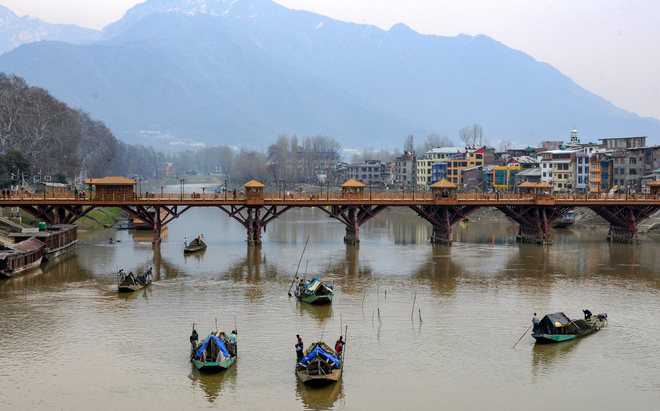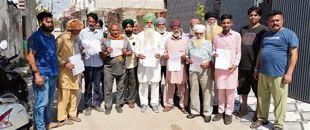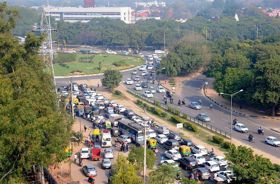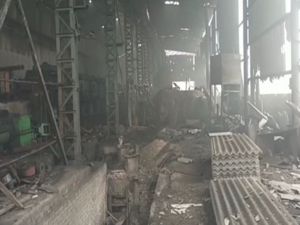
The government is planning to introduce boats in Srinagar for ferrying passengers. file photo
Samaan Lateef
Tribune News Service
Srinagar, May 21
As traffic congestion grows in Srinagar due to the increasing number of vehicles and delay in completion of road projects, the state government has once again shifted its focus to the inland water transport system for city.
The government is planning to introduce boats in Srinagar, which is surrounded by various water bodies, for ferrying passengers from different localities.
In Srinagar, once called the city of canals or the “Venice of the East”, boats were a popular means of transport until roads were built around water bodies.
Even as the proposal for a water transport system for Srinagar has been under consideration since 1998, the state government conducted the first trial in 2012 in the Jhelum. Though the initiative didn’t attract much attention, the state government continued using boats to ferry residents of the old city to commercial hub Lal Chowk before they were destroyed in the 2014 deluge.
Deputy Commissioner Shahid Choudhary said the government had received different models of water transport for Srinagar. “The government is working on the water transport system and discussions are on,” Choudhary said.
As per one of the policies pending before the government, the hundreds of ghats (pick-up points) along the banks of the Jhelum, Dal lake and other smaller lakes will be used for carrying passengers from different parts of the city.
The water transport in the Jhelum, which dissects Srinagar, and the Dal lake will cater to the majority of the people intending to travel within the city, experts say.
Officials have identified 211 ghats along the Jhelum and Dal lake. In the first phase, they said 42 ghats along the Jhelum and 39 along the Dal will be repaired and opened for carrying passengers in boats.
Utilising the existing ghats needs a minimum investment and will have immediate benefits as it will lead to decongestion of roads, and help in livelihood generation, they said.
Some of the important ghats believed to decongest the traffic massively are at Amira Kadal, Aali Kadal, and Lalla Ded, the hospital along the Jhelum.
To replace thousands of vehicles and ease traffic pressure at bottlenecks, locals said the government had to come up with concrete measures to address the issue.
“A few boats in the Jhelum or Dal won’t address the issue. The government has to create awareness, introduce bicycles, and also increase the number of boats,” said Shahnawaz Khan of Rainawari.
The frequent traffic jams and an increasing number of vehicles in Srinagar have necessitated the exploration of a new system of transport.
“Srinagar has 350 vehicles per km. This is among the highest in the world. A revamped public transport is the only solution. Steps are on the anvil. Suggestions are welcome,” Choudhary said.
Choudhary said 250 old minibuses would be replaced by modern buses. He said the government would provide an incentive of Rs 5 lakh per minibus.
The traffic adviser of the previous PDP-BJP government, Anuj Malhotra, says water transport and bus-based transport system can transform Srinagar.
Malhotra, who has already submitted a plan for the water transport system before the government, said: “The whole plan (water transport) is ready with all details. No need to start from scratch. It can be launched within two months if the government considers the plan.”
What a way!
- Minimum scope for road widening
- Navigable water network exists
- Environment-friendly mode of transport
- Impetus to urban development
- Boost to local economy
- Create jobs — both skilled and unskilled
Need for weirs
- During the autumn, water level in Jhelum dips which will make navigation difficult
- The government has to establish a long series of weirs, or barriers across the river that would raise the water level during the lean seasons. At present, there is only one weir at Chattabal in Srinagar, built in 1905 by Dogra ruler Hari Singh. It raises the level of the Jhelum from Chattabal to Pampore, about 14 km south of the city.
- The Central governmen in January 2018 declared four major rivers, including Jhelum as “national waterways”, paving the way for inland navigation on them to boost water transport and tourism


























